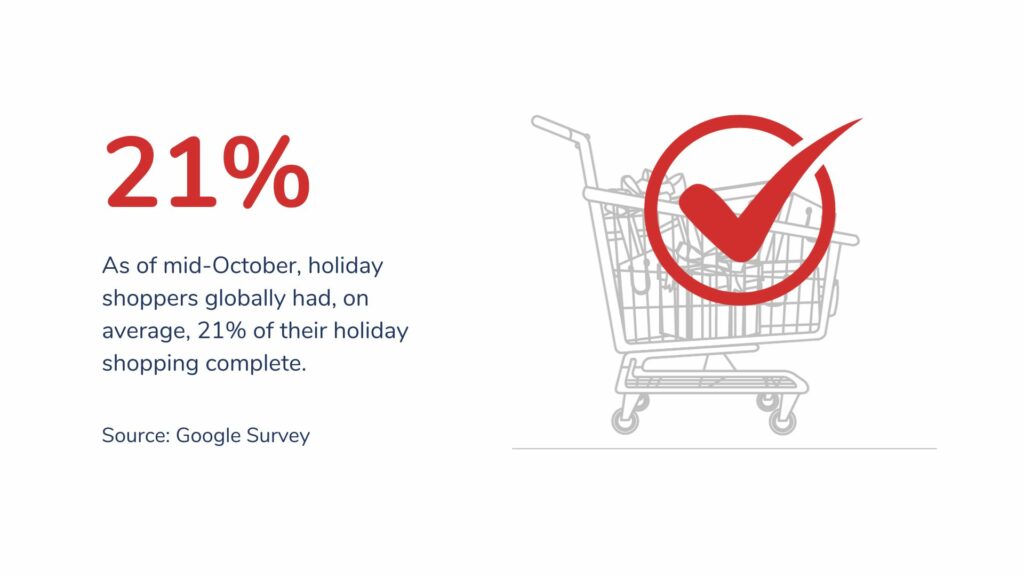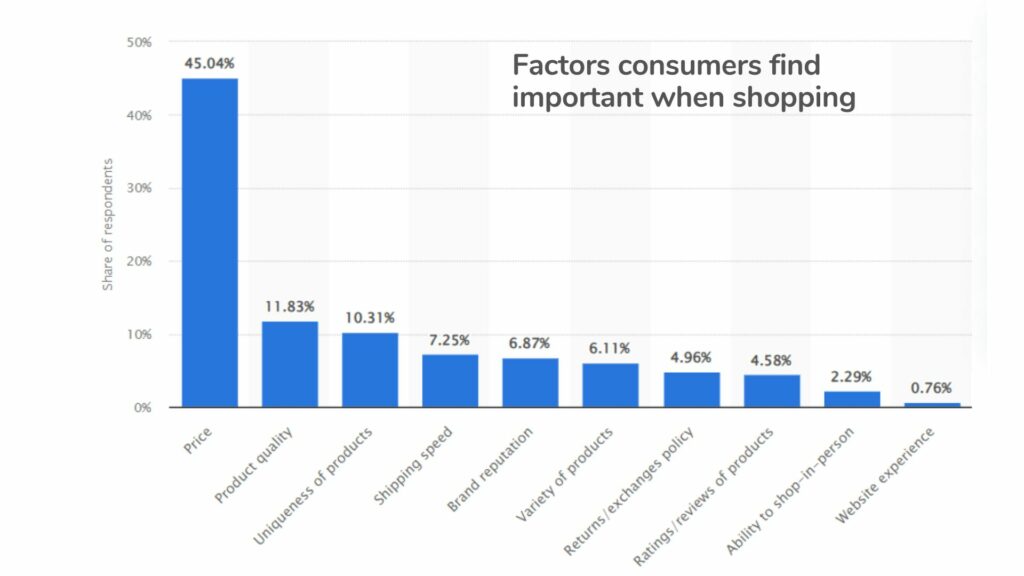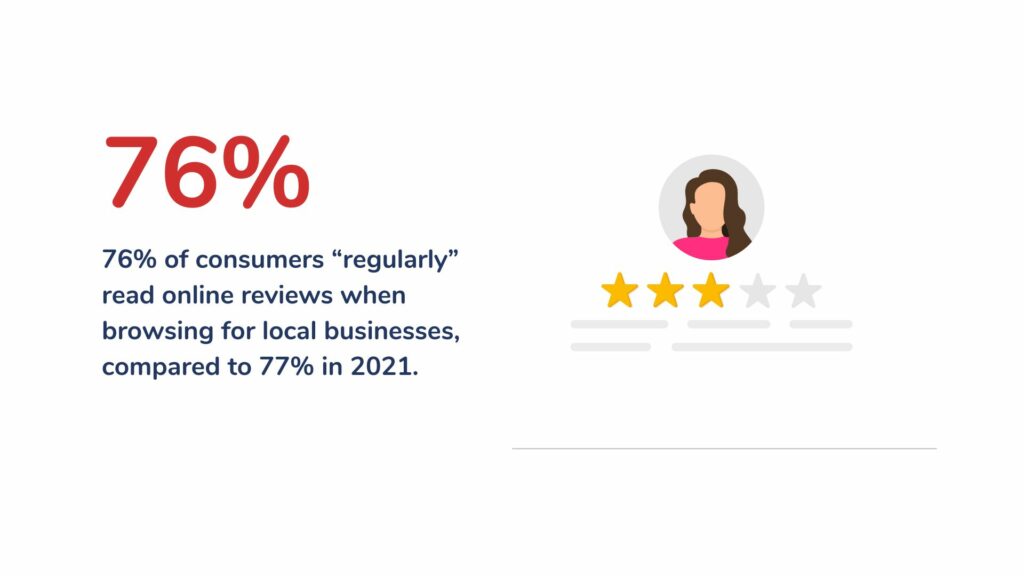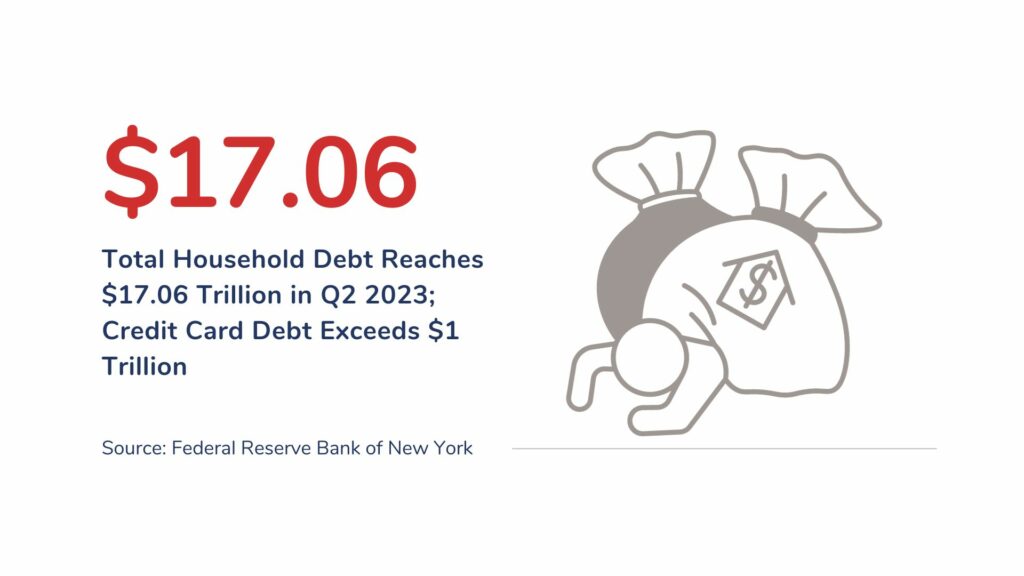The 2023 holiday season holds significant promise and excitement for eCommerce businesses. We have entered a period characterized by higher consumer demand, technological advancements and evolving customer habits. Businesses have a multitude of eCommerce trends to follow and capitalize on this shopping season.
In this article we explore in depth the eCommerce trends for the holidays in 2023, along with how business owners can utilize these trends to boost sales, customer engagement, and overall success.
What To Expect This Holiday Season?
Holiday shopping now kicks off earlier than ever before. In recent years, it has become evident that the traditional holiday shopping season starting after Thanksgiving is a thing of the past. Major retailers offer “Black Friday” and “Cyber Monday” deals as early as October along with other “early access deals” and holiday season promotions. Exciting holiday sales discounts start early and businesses continue spending on promotions throughout the entire fourth quarter.

In fact, by mid-October, holiday shoppers around the world had already completed approximately 21% of their holiday shopping.1 This year, it appears that both retailers and shoppers are following a similar pattern, reinforcing the trend of early holiday shopping as the new normal. Thanks to autumn promotions like Amazon’s Prime Early Access Sale, the growth rate of eCommerce in October exceeded that of November and December, experiencing a remarkable 9.8% surge in 2022.
This, coupled with events like “Black Friday in July,” illustrates that consumers are shifting their holiday spending earlier in the year and anticipate retailers to adapt accordingly. For retailers, this means being prepared to capture attention well in advance and adopting a continuous “always-on” marketing strategy.
Top 10 eCommerce Trends For Holidays In 2023 To Watch Out For
1. 2023 Will Experience Early Start
In 2022, a remarkable 54% of buyers kicked off their gift research and purchases even before Thanksgiving. Anticipate the holiday shopping frenzy to start earlier, just like the previous year. As an eCommerce business owner, it’s vital to brace for a relatively long shopping season this year.

This necessitates well-planned inventory management, efficient processing of orders, and improved logistics to accommodate a sustained surge in orders. To get ready for this shift, consider these tips:
- To enhance your order processing, consider investing in technology and systems that can streamline the process. This may include implementing order tracking, automated notifications, and ensuring a user-friendly online shopping experience to handle increased traffic seamlessly.
- To effectively plan for your inventory, analyze your sales data from the previous year to identify which products were popular and any emerging trends. Make sure you have an ample supply of these items beforehand to meet the initial demand.
- Ensure that your employees are equipped to handle the increased workload while maintaining a positive and helpful attitude towards customers.
- Make your return and exchange policy clear and customer-friendly. This helps build trust with customers and can impact their decision to shop with you early.
2. Personalization In Boosting Sales
In the upcoming holiday season, personalization will play a pivotal role in driving sales. To cater to consumers who are actively seeking discounts, brands need to step up their game by not only suggesting products aligned with shoppers’ intentions but also offering the best value.
Surprisingly, nearly two-thirds of US online adults greatly appreciate it when companies recommend products that are on sale or come with promotions. An effective approach involves layering messages with first-party data, such as loyalty or in-app purchase information, across various channels, thereby increasing relevance and appeal for consumers.
3. Embrace Omnichannel Continuity
An impressive 73% of consumers visit multiple channels when going shopping. Transitioning between both online and in-store solutions. Business owners need to make sure that their online platforms work well with their physical stores, offering a seamless shopping experience. You’ll stand out if you coordinate your inventory, pricing, and advertising across channels.

The distinction between online and in-store buying is still being eroded. Brands are now dedicated to delivering a smooth experience on diverse channels, letting consumers begin their shopping on one platform and finish it on a different one. The secret is the seamless blending of offline and online purchasing experiences to satisfy the multifaceted preferences of modern consumers. Here are some actions to take as the holiday shopping season as we approach 2023:
- To deliver a seamless purchasing experience, integrate your online and in-store services.
- To foster confidence, make sure prices are consistent across all channels.
- To increase exposure, promote both your live and online presence simultaneously.
4. The Social Commerce Wave
The landscape of social media is rapidly transforming into a thriving realm for online shopping. In 2022, a substantial 36% of customers dedicated more time to researching products and exploring offers compared to the previous year. This trend is poised to persist, marked by consumers exercising greater caution with their budgets, an abundance of choices, and access to extensive deal information and comparison features.
It is important to note that more people prefer to go through online reviews about a product before buying it than ever before. 2

Brands are cleverly forging communities, facilitating a seamless journey for customers from product discovery to making purchases via social media. There’s no doubt that social media serves as both a marketplace and a wellspring of inspiration during the holiday season.
The fusion of eCommerce and social media is set to be pivotal. Retailers should seize this opportunity by optimizing their profiles across different social media channels for attractive posts and posting ad campaigns. Some practices are gaining prominence and are expected to drive substantial conversions, such as:
- Usage of keywords for captions.
- Use proper tags under the caption.
- Use attractive banners for different products and discounts.
5. Consumers Are Not Spending Much This Season
Despite a decline in inflation compared to previous years, many retailers anticipate that consumers will scale back their spending in response to rising prices. Consequently, retailers are planning to order less inventory than in previous years. Adding to this uncertainty, Wall Street is predicting a potential U.S. recession within the next 12 months 3, possibly as early as November, which coincides with the start of the holiday shopping season.
Amid economic uncertainty, it’s evident that holiday shoppers will be actively seeking ways to save. In fact, a substantial percentage of retailers anticipate that consumers will be on the lookout for discounts during this holiday season. While offering discounts may entail sacrificing some profit margins, it is imperative to meet the evolving needs of customers in this season of uncertainty.
6. The Sustainable Fashion Revolution
Consumers are increasingly becoming careful about the environmental impact of their shopping choices. This surge in conscious buyers is spurring a heightened demand for products that are sustainable and environmentally friendly.
ECommerce brands are rising to the occasion by showcasing their support for green products, transparency in sourcing methods, and dedication to a green planet. Here’s a roadmap for action:
- Begin by meticulously choosing your materials and suppliers. Seek out sustainable and ethical sources for your raw materials. This not only minimizes your environmental footprint but also promotes fair labor practices.
- Give priority to eco-friendly production methods that focus on reducing waste and energy consumption. Incorporate the use of renewable energy sources and environmentally conscious dyes and chemicals in your manufacturing process.
- Transparency is key. Let your customers know about your supply chain and production methods. Educate them on the origins of your products, the manufacturing process, and the impact their purchase has.
- Consider using environmentally friendly packaging materials that can be recycled or biodegraded. Minimize excessive packaging and promote recycling or reusing among your customers.
7. The Growing Popularity of Buy Now, Pay Later
The utilization of buy now, pay later or BNPL financing options is on the rise, accounting for a noteworthy 9% of total orders, particularly spiking during the week leading up to Christmas.
This prediction indicates a substantial but expected increase compared to 2022 when buy now, pay later sales comprised 7% of all online orders.
Regrettably, the escalating trend of consumer debt often mirrors underlying economic challenges. In the first quarter of 2023, the total household debt in the United States reached a staggering $17 trillion 4, marking a historical high. This surge in debt reflected a 0.9% uptick from the fourth quarter of 2022 and a significant $2.9 trillion increase compared to the end of 2019, prior to the pandemic-induced recession.

For eCommerce businesses yet to offer a buy now, pay later option, this trend underscores the potential benefits of considering its inclusion in their payment offerings.
8. Influence of Generative AI
The buzz surrounding models like GPT and their increasing accessibility is making waves in the tech world. Recent research reveals that 17% of consumers have already harnessed the power of GPT for product research and inspiration, and an additional 10% plan to leverage it for curating their holiday shopping lists.
During the holiday season, brands and retailers are poised to fully use this technology, utilizing customer data to craft highly personalized shopping journeys that not only enhance the overall experience but also foster customer loyalty. The most significant impacts expected are the following:
- Automation of marketing campaigns and the generation of content for emails, landing pages, text messages, social media, and mobile apps.
- Implementation of conversational site search, providing a more natural and human-centric way for customers to discover the perfect gifts across digital platforms.
- Development of more nuanced and human-like chatbot responses that possess the ability to deeply understand, anticipate, and effectively address customer inquiries and concerns.
9. The Impact of BOPIS on Retail
In 2020, the concept of Buy-Online-Pickup-In-Store (BOPIS) emerged as a game-changer in the retail landscape. Today, it remains an essential offering for shoppers, influencing their choice of retailers. Our research highlights that a significant 39% of shoppers actively seek out retailers that provide BOPIS options.
Beyond merely attracting customers, BOPIS has the potential to boost sales. A noteworthy 41% of shoppers are now more inclined, compared to a year ago, to purchase after browsing online for products available in physical store locations. This shift in omnichannel buying behavior underscores the importance of visibility and convenience as drivers of customer loyalty.
During the 2022 holiday shopping season, BOPIS played a pivotal role, with one in five online orders being fulfilled through this method. This figure soared to over one in three after the shipping cutoff dates, demonstrating its increasing significance.
10. Resale Market Will Be In Focus This Year
The popularity of the resale market has seen a significant increase, driven by consumer interest. This trend has been steadily growing in recent years, fueled by improving technolgies. The movement originated with platforms like Craigslist, which offered a space for people in the United States to buy and sell pre-owned items. Today, the impact of the resale market extends beyond U.S. borders, reaching consumers worldwide. This is largely due to contemporary online marketplaces such as Facebook Marketplace playing a role in its expansion.
One might wonder what drives consumers to embrace the resale market so eagerly. The answer, while simple, holds considerable significance—saving money. In a time where financial wisdom and cost-consciousness are highly valued, consumers are increasingly finding solace in the resale market as a way to make their dollars go further.
The increasing popularity of purchasing pre-owned goods reflects a significant change in consumer behavior. This trend has moved beyond niche circles and is now a mainstream phenomenon. Consumers have realized that the resale market not only provides economic benefits but also offers a sustainable approach to consumption. By embracing pre-owned items, individuals actively contribute to reducing waste and minimizing their environmental impact.
Conclusion
Understanding your customers is crucial for customer retention. To create an effective holiday strategy, start by gaining insights into their needs, preferences, history, and previous interactions.
Utilize your existing customer data and leverage technologies like artificial intelligence and automation to engage with your customers at the right moments. This approach will help you create customer experiences that cultivate loyalty during peak holiday seasons and throughout the retail calendar.
References:
2- BrightLocal
3- Forbes
Frequently Asked Questions
What's the holiday sales prediction for 2023?
The majority of sales growth in 2023's holiday season is expected to come from eCommerce.
How much are eCommerce sales expected to grow during the 2023-2024 holiday season?
ECommerce sales are anticipated to grow between 10 and 13 percent year-over-year, reaching a total between $278 billion and $284 billion.
What will consumers be looking for in 2023?
Global consumer trends for 2023 include responsible yet emotionally driven spending, the evolving role of digitization in purchasing, demands for gender equality, and the potential influence of Gen Z on consumer preferences.
How can businesses effectively reach customers in 2023?
Here are four easy strategies to attract more customers in 2023:
Ask for referrals to acquire customers at a lower cost.
Explore partnerships or joint ventures for quick wins.
Utilize direct mail, which often yields the best return on investment.
Invest in informational marketing to establish trust.What's the significance of sustainability in consumer preferences for 2023?
Sustainability is expected to continue influencing consumer choices in 2023, with an increasing focus on eco-friendly and socially responsible products and practices.

